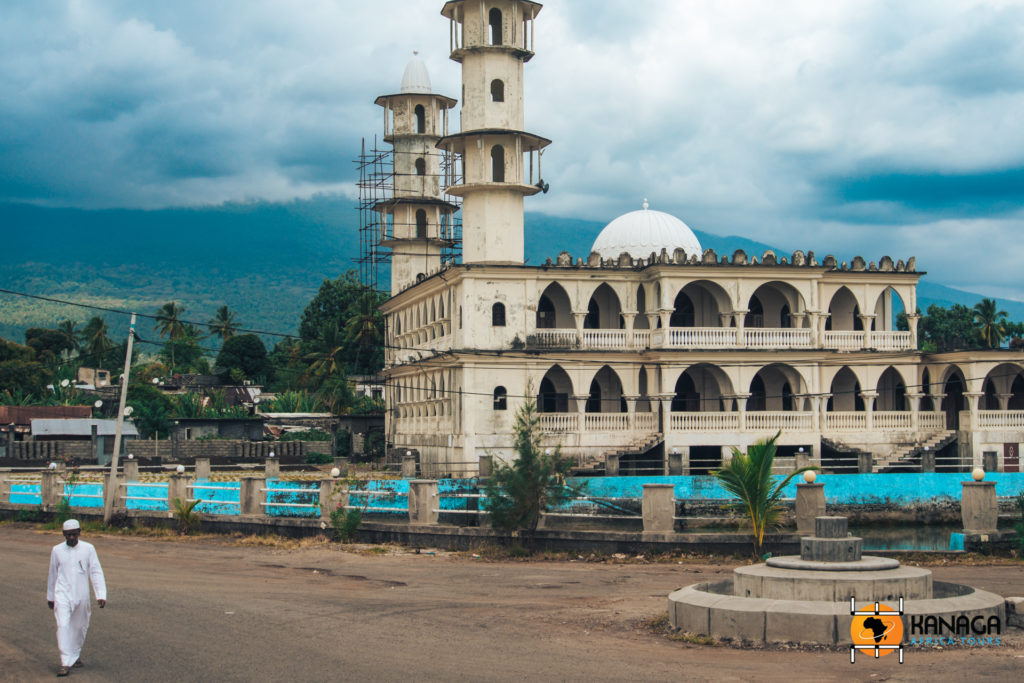As wild and little explored by tourism as they are rich in the cultural legacies of ancient sultanates, the Comoros Islands possess an extraordinary architectural heritage that includes five main sites, on the islands of Anjouan and Grande Comore, dating back some 12 centuries of history. The medinas of Mutsamudu, Domoni, Itsandra, Iconi and that of Moroni have been waiting since 2007 to be included in the UNESCO World Heritage List, due to their exceptional nature and their urgent need for preservation.
Royal palaces, mosques, mausoleums and tombs, communal dwellings with carved entrances and public squares, access to which is emphasised by the characteristic monumental gates, typical of the traditional architecture of the Comoros, are among the precious testimonies, some of them ruined, of a millennial history, which goes back in its most ancient stratifications as far as the 8th century, when the first Bantu peoples settled on these islands bathed by the Indian Ocean, but better codified in the buildings after the 13th century, under the influence of Arab-Shirazi domination.
Mutsamudu, a small maritime town on the island of Anjouan, preserves in its 14th-century medina, a set of narrow, often arcaded alleyways and impervious stairways, overlooked by numerous residential buildings and shops, ancient princely palaces, places of Islamic worship and mausoleums of personalities who have made the Comoros’ historical legacy great. While the ancient walls that protected the original core are now gone, the Palace of Ujumbé is well preserved in its former architectural magnificence. On the Sinejou hill, in a dominant position, is what remains of the 18th-century citadel, with its ramparts, defensive walls and fort that incorporates a small Hispanic-style Catholic chapel, a legacy of successive European dominations. On the east coast of the island is the 12th-century ancestral village of Domoni, surrounded by ancient walls that protected splendid stately homes, now in ruins, with their incredible polychrome decorations, and a royal palace, dating back to the local 13th-century sultanate, still miraculously well preserved.
The cradle of culture of Swahili origin in the Comoros is undoubtedly the Itsandra medina of, dating back to the 14th century, on the island of Grande Comore (Ngazidja in the local language). For a long time it was its main seaport and capital, before this was moved to Moroni. A riot of architectural legacies can still be admired among the narrow alleys and winding stairways: a 17th-century fortification, the curious traditional house of Chingo Nyamba, with its striking tortoise-shaped roof, dating back to the 13th century, the home of the saint Al Habib Omar Sumet and a multitude of mosques, built between the 14th and 19th centuries. Itsandra is home to the typical traditional Comorian urbanisation, the centrepiece of which revolves around the masonry public squares, whose access is marked by beautiful monumental gates.
Contemporary with the foundation of Domoni, is the Iconi medina, an ancient village that served as the capital of Ngazidja (Grand Comoros), two centuries before Itsandra. The ruins of the Palace of the Sultans of Bambao, overlooking the sea, and the ancient walls on the top of the hill, which served as a refuge for the population in case of attack, are the most precious masterpieces of a historical centre dotted with ancient palaces and squares, with their exquisitely Comorian decorated gateways.
Although the historical centre of today’s capital of Moroni, dating back to the 14th century in its oldest core, has lost much of its heritage, it nevertheless preserves its former magnificence in a number of sumptuous palaces, still inhabited by the descendants of royal families, as examples of the characteristic monumental style of the sultanate era. The medina has a typical labyrinthine urban layout, bordered by the dense facades of two- or multi-storey dwellings, which often create arcades over the narrow alleys. Portals carved in relief and wooden girders still characterise the entrances to numerous historical residences, and dozens of small, ancient mosques punctuate and embellish the town centre. Of these, the main one is the monumental Friday Mosque, although it has undergone numerous alterations over the centuries.
The five citadels, now endangered and unfortunately in a poor state of conservation, are the most representative and tangible expression of the ancient sultanates of the Comoros, which followed one another in a history spanning thousands of years, comparable in style and importance to the centre of Stone Town in Zanzibar, architectural legacy of the Swahili culture, of the Arab-Indian imprint, and of the influences that these also had on the Comoros islands, in their own local expression and reinterpretation, entirely characteristic and original, of which the monumental access gates to the urban settlement are undoubtedly the masterpieces.







